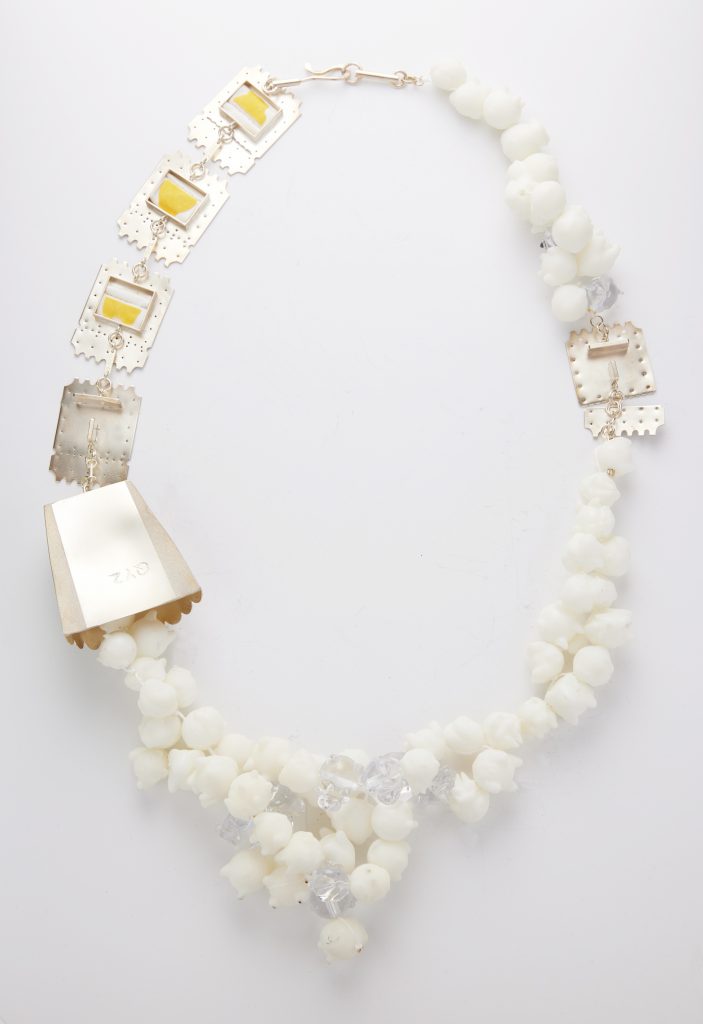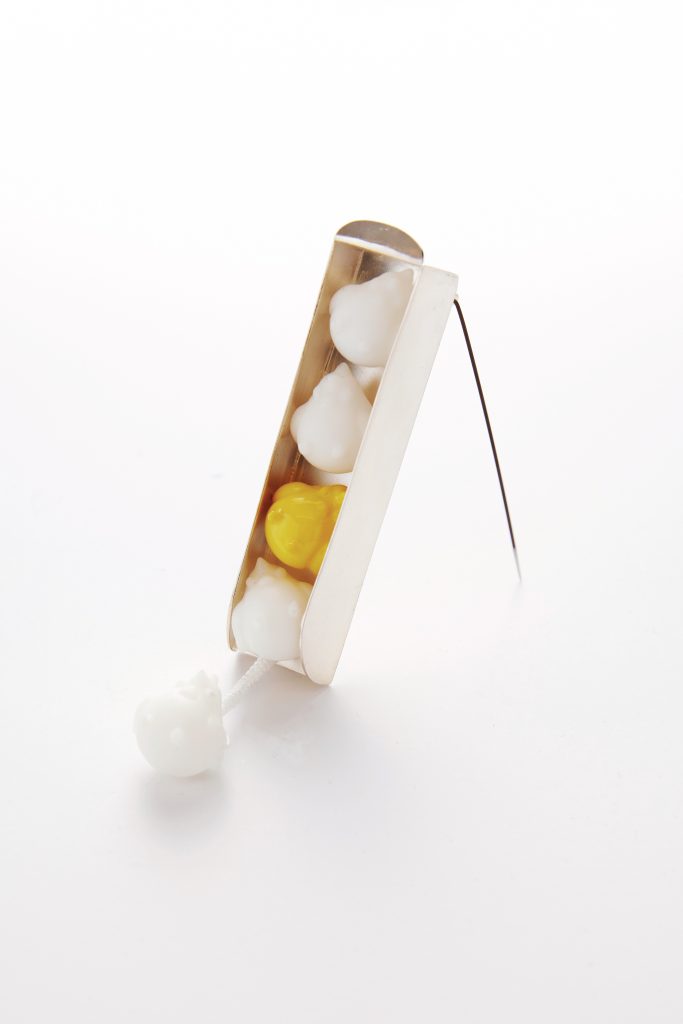In the context of contemporary art, jewelry is often misunderstood as a purely functional adornment. But for artist Qianying Zhu, jewelry is a language—a form of cultural sleight of hand that deliberately disrupts conventional grammar.
Born in China and currently based in New York, Zhu has established a distinctive voice in the field of contemporary jewelry through her signature use of the Chinese zodiac. Her work liberates the twelve animals from their traditional roles as fixed symbols or totems, reimagining them as performative devices embedded within nonlinear, open-ended structures. These figures are no longer static, recognizable icons but dynamic narrative units—stretched, dissolved, fractured, scattered—resembling dream fragments or digitally modeled mutations.



This transformation is most evident in her series Transformation Experiment, where familiar animal forms are pushed to the edge of recognition. Using 3D-printed polymers, flocked textures, and enamel, Zhu creates works that blur the boundary between sculpture and ornament. The animals appear smudged, distorted, and suspended in a state of flux. They are no longer emblems of identity, but visual annotations on the instability of identity itself.
Zhu’s artistic logic is not merely a semiotic game. Her fascination with ephemeral, involuntary moments is equally present in works like Oops, where zodiac figures resemble popcorn caught mid-spill—accidental, absurd, and frozen in transition. With humor, lightness, and a childlike sense of the surreal, she repositions jewelry as a “physical annotation” of lived experience—less about materiality, more about emotion.

Her material choices reflect a mastery of contrast: soft versus rigid, handcrafted versus industrial, playfulness versus ritual. These juxtapositions form not only a sensory counterpoint, but also a methodological “cultural hybrid.” Zhu respects the essence of her materials while simultaneously subverting their fixed identities.
Qianying Zhu incorporates fabric in her work
Her work has been exhibited internationally and recognized with awards such as the Brussels Jewelry Week Award, the MUSE Creative Award, and the NY Product Design Award. Yet more compelling than the accolades is her persistent resistance to formal orthodoxy. Zhu is not interested in preserving a single cultural narrative; she’s more invested in twisting the inertia of inherited forms.
What she offers is a flexible, humorous experiment in cultural language—one that extracts traditional elements from their original context and reassembles them through material-based rebellion. In her work, microstructures become metaphors for the rhythms and perceptual logic of contemporary life.
Qianying Zhu’s jewelry, in its precision and play, may articulate the question more clearly than any clock: How do we perceive ourselves in the temporal dissonance of modern experience?




